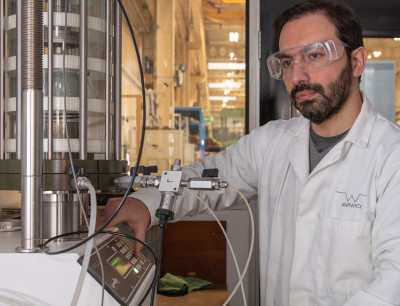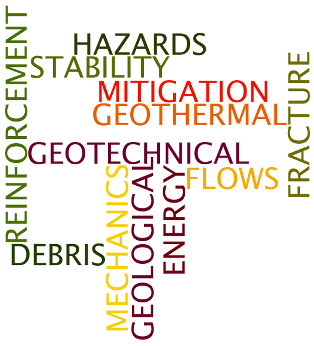Ground Engineering
 |
 |
The Challenges
Global expenditure on energy and transport continues to increase as nations race to improve economic performance. Billions of pounds will be spent on UK’s roads, railways, offshore oil and gas production facilities, renewable energy facilities, ports, pipelines and tunnels over the next two decades.
Much of UK’s energy and transport infrastructure will have to be built on unavoidably problematic soils, such as the soft estuarine clays or London Clay; as available space for new development becomes scarce. Moreover, due to the UK’s weather conditions, there tends to be frequent instances of serious slope failure or landslides every year. With the development of new vehicular transportation technology, the increasing vehicle speeds place increased demand on embankment stability and reliability. New excavation methods are also required for renewable energy development.
Due to the above mentioned complexity of the geological conditions, external loading conditions, critical ultimate limit state as well as the long serviceability limit state, advanced laboratory testing, physical modelling, full-scale field testing and cutting-edge computational simulations are urgently needed in order to provide up-to-date technical support for these large expenditure public and private sector projects, providing ample opportunities for investment. Indeed, such investment is necessary to ensure infrastructure development keeps pace with the aforementioned generational changes taking place.
Our Research
Warwick Ground Engineering group focus not only on the core aspects in geotechnical engineering, such as ground reinforcement, embankment stability of railways or roads, retaining structures, geothermal energy and slope stability, but also on wider cross-disciplinary aspects in geotechnical engineering.
The group have extensive experience working with geosynthetics materials. These are polymeric materials used in Geotechnical Engineering to enhance the properties of the ground such as increasing strength, aiding drainage or creating barriers to fluid migration. Through a strong belief in integrated and interdisciplinary research, recent developments comprise the use of 3D printing for rapid prototyping, sensor development and use of digital imaging to assess soil-geosynthetic interaction.
Projects have been well developed with the work on numerical and experimental modelling of the initiation of landslides and subsequent debris flows under various climatic conditions. DEM numerical investigation of the behaviour of sands and cemented soils (e.g. lunar soil, methane hydrate bearing sands) for constitutive modelling purposes and of engineering problems such as tunnelling in jointed rock masses and the stability of rock slopes. Hazard assessment of landslides based on geotechnical modelling and its integration with remote sensing. Determination of optimal slope shapes for engineered slopes and open cast mines via analytical modelling and experimentation.
Research projects are extricable in their direct link to current railway development in the UK, including high-speed train embankment stabilisation techniques, long-term performance prediction, vibration and noise reduction techniques and the railway line health monitor techniques, which are currently conducting by numerical simulations, advanced lab tests and field tests.
Fracture mechanics; reactive and non-reactive fluid flow in heterogeneous fractured porous media and contaminant transport are other ongoing projects.
| The Ground Engineering group is part of the Civil and Environmental Stream |
